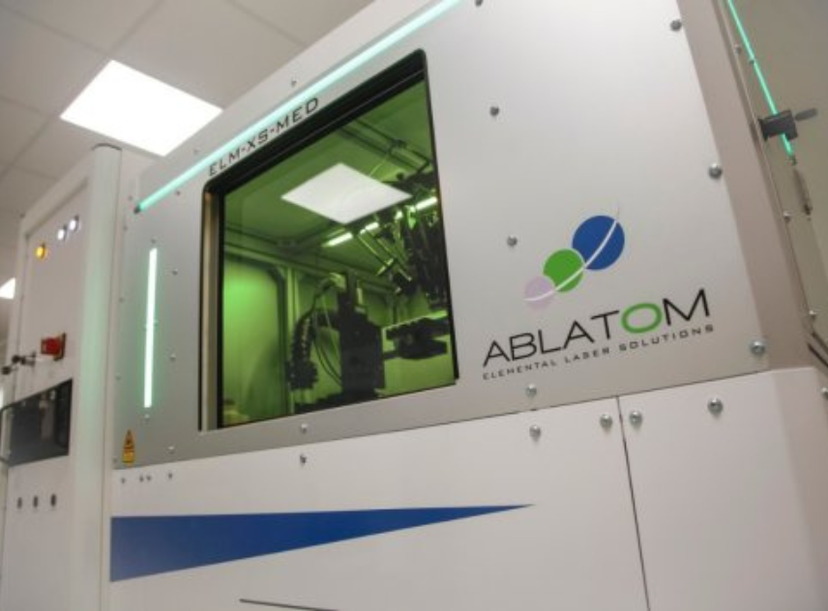ABLATOM launches the first biomedical LIBS microscope in a hospital setting
ABLATOM deploys its LIBS microscope at the Grenoble Alpes University Hospital (CHUGA) to revolutionize patient diagnostics
7 Nov 2024
ELM-XS-MED, Elemental Laser Microscopy – eXtrem Sensitivity for bioMEDical applications.
Emerging from the Institut Lumière Matière (ILM)1, deep tech startup ABLATOM, a specialist in laser-induced breakdown spectroscopy (LIBS) technology, has announced the deployment of the world’s first biomedical LIBS microscope, ELM-XS-MED2, at the Grenoble Alpes University Hospital (CHUGA). This breakthrough device, specifically designed for the analysis of patient biopsies, is the first to be implemented and used in a hospital environment.
LIBS technology enables extremely precise, rapid, and contactless chemical analysis of human tissue. This technological innovation promises to significantly enhance diagnostics for patients potentially exposed to toxic agents and accelerate our understanding of chronic diseases such as cancer.
Having pioneered the latest advances in LIBS elemental analysis and imaging, ABLATOM and its partner, ILM, are now addressing a critical public health need by redefining the detection and observation capabilities for toxic mineral and metal elements in human tissue.
Purchased by the Université Grenoble Alpes through a public tender and hosted at CHU Grenoble Alpes, this LIBS microscope opens new perspectives for biomedical research by directly analyzing the elemental composition of biological tissues from animals or humans. The instrument will be used in numerous research projects in pulmonology, dermatology, and oncology, as well as in the development of medical nanoparticles for preclinical laboratory or regulatory studies. It is expected to facilitate faster, more accurate, and comprehensive diagnostics while improving patient care for those exposed to environmental risks..
LIBS technology is a fully optical analytical technique that reveals the chemical composition of any state of matter (solid, liquid, gas) in just a few milliseconds. It works by focusing a very brief laser pulse to sample a fraction of material, leading to the formation of a plasma. Analyzing the optical emissions from this plasma allows for the detection, identification, mapping, and quantification of the chemical elements in the material. Its key features are:
- Samples, excites and detects in a single process
- Reveals the chemical composition of matter almost instantaneously
- Detects both endogenous and exogenous elements, including light elements
- Large-area mapping on a cellular scale
References
1. ILM, Joint research unit of Université Claude Bernard Lyon 1 and CNRS (The French National Centre for Scientific Research).
2. ELM-XS-MED, Elemental Laser Microscopy – eXtrem Sensitivity for bioMEDical applications.
Want more of the latest science news straight to your inbox? Become a SelectScience member for free today>>
